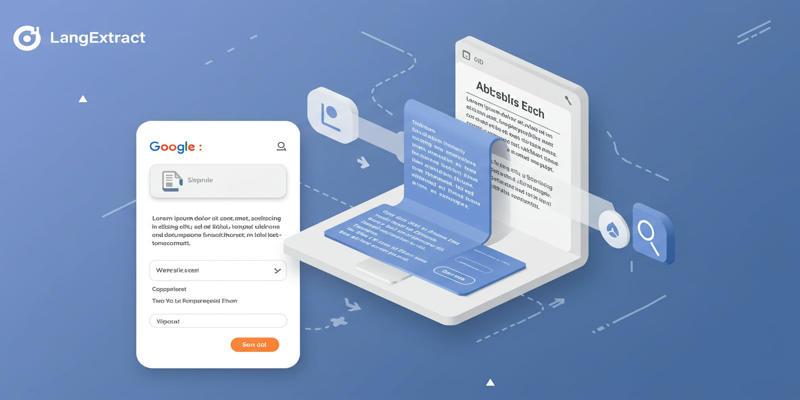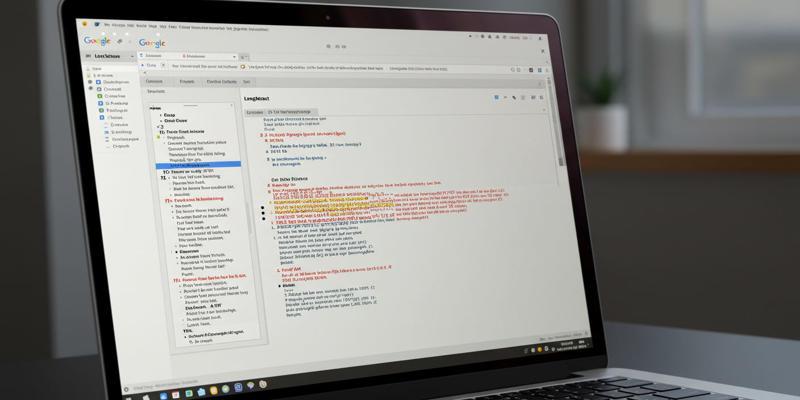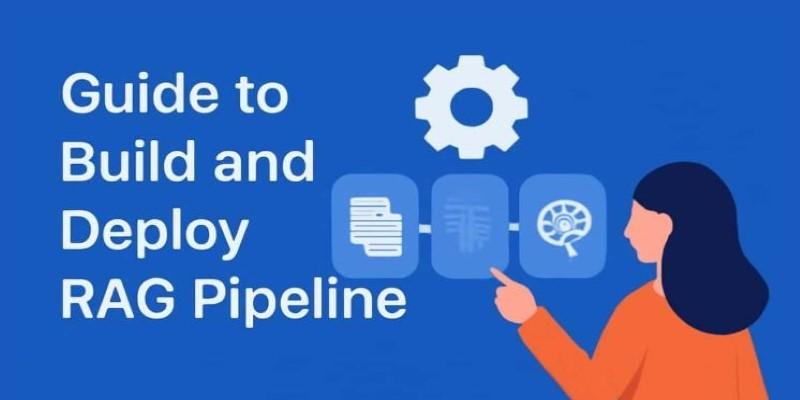In the modern data-driven age, unstructured text, be it in clinical notes or legal documents, as well as the comments of customers, contains precious information that is frequently lost in the mazes of complexity. It is time-consuming and prone to errors when sifting through this information manually. Enter Google's LangExtract, an open-source Python library designed to revolutionize how developers and professionals extract structured information from unstructured text using large language models. This tool is a game-changer in not only healthcare but also content optimization since it offers precision, efficacy, and flexibility.
The power of AI allows LangExtract to programmatically extract and structure important information within text in a manner that results in formatted outputs that can be traced back to the text. Whether it is crunching long reports or preparing content to be found by the search engine, LangExtract provides a solution that is easy to use and yet at the same time accurate. It is better than the old extraction procedures due to its distinguishing properties, such as correct source grounding and interactive visualization.
Key Features of LangExtract

Precise Source Grounding and Traceability
- One of LangExtract's standout features is its ability to map every extracted entity—such as keywords, entities, or relationships—back to its exact location in the source text. This is because of the precise source grounding to have total traceability, and so extracted information can be visualized by the user as compared to the original material. To the SEO professionals, it can be seen that they can analyse the use of keywords and the structure of the content without mentally losing their context.
Reliable Structured Outputs
- LangExtract imposes consistent schema-based outputs with few-shot examples, where users feed the model with sample extractions. This guarantees that the results are not only designed but also aligned to the user with their particular needs. As an example, in content optimization, you may specify output formats based on clusters of keywords or entity relationships, allowing extracted data to be more readily incorporated into strategies.
Optimized for long documents
- The size of large documents, such as complete-length articles or reports, cannot be easily processed by the human brain, and an example of this is information fragmentation and low recall. LangExtract goes about this using clever chunking, parallel processing, and several passes over the extraction. This method is exact in a complicated situation, and one is not going to miss out on any essential information.
Interactive Visualization
- LangExtract produces interactive HTML visualizations, giving users an opportunity to see extracted entities in context. This is a handy feature during demos, audits, or even shared reviews because annotations are directly noted in the original text. To teams, this visualization can demonstrate trends related to the use of keywords or gaps in content, allowing teams to make decisions based on the data they have.
Flexibility Across Domains and Models
- From healthcare to legal and SEO, LangExtract adapts to any domain with minimal setup. It supports both cloud-based models, such as Gemini and OpenAI, and local models, which speak to a wide range of workflows. Such flexibility enables professionals to use the tool in activities such as entity-based SEO optimization or keyword analysis without the necessity of vast amounts of machine learning understanding.
How LangExtract Benefits SEO Professionals
Enhancing Keyword Research and Optimization
- Keyword research is the backbone of SEO, but traditional tools often miss nuanced or emerging trends. Any significant amount of text, including competitor text and user-created feedback, can be processed by the language extract tool, LangExtract, to extract high-value keywords and semantic relationships. To illustrate, the use of the top-ranking pages to extract a cluster of keywords can allow the SEOs to identify gaps and opportunities in their content strategy.
Entity-First Content Strategy
- Current search engines, such as the entity-first indexing of Google, are not concerned with the matching of keywords, but with semantic understanding. LangExtract helps align content with this trend by extracting entities (e.g., people, products, concepts) and their relationships. This allows SEOs to produce content that is thorough in its coverage of subjects to increase authority and relevance.
Content Performance Analysis
- LangExtract's visualization capabilities allow SEO teams to audit existing content for keyword density, placement, and relevance. It is also easier to point out extracted entities in context to detect the presence of keyword stuffing or under-optimized passages. This makes sure that the content follows SEO best practices, and it is also natural to read.
Streamlining SEO Audits
- For large-scale websites, manual SEO audits are impractical. LangExtract mechanizes the procedure of retrieving crucial components (meta descriptions, headings, and internal links) on numerous pages at the same time. This can speed up the audit and offer practical information on how to improve on-page SEO.
Practical Applications of LangExtract
 Content Optimization
Content Optimization
- LangExtract can analyze top-performing content in your niche to extract the core topics, entities, and semantic connections that make it successful. By studying it, you can reverse-engineer winning content formulas and implement them in your own strategy to make sure that your content is competitively optimized for users and search engines.
Technical SEO Analysis
- Beyond content, LangExtract can process technical elements like log files or JavaScript-rendered content to identify crawling issues and opportunities. SEOs can use the extraction and structure of this technical data to prioritize those fixes that can most affect site performance and visibility.
Local SEO Enhancement
- In the case of physical businesses, LangExtract could be used to analyze the search results in local search engines and the listings on the competitors to obtain necessary information like services and amenities, as well as customer reactions. This information can support a stronger local SEO strategy, which assists companies in becoming more visible in near me search and local pack results.
LangExtract in Your Workflow
LangExtract also needs a little Python knowledge to get started. The library can be accessed through pip, and you can start by specifying your extraction schema and giving examples of a few shots. The documentation of the tool contains detailed instructions on all the use cases, ranging from simple entity extraction to advanced relationship mapping.
Like any AI-based software, it is necessary to screen and confirm outputs, particularly in critical use. However, LangExtract's traceability features make this verification process straightforward and efficient.
The Future of Text Extraction
Google LangExtract is another critical step toward available, advanced AI in a practical, everyday activity. As the tool evolves, we will experience more accuracy, faster processing rates, and narrower vertical market demands.
To SEO experts and content writers, it is not a question of merely keeping pace with technology, but rather acquiring a competitive advantage in an ever-more advanced online environment with tools like LangExtract. With the ability of structured data extraction, you will be in a better place to make better decisions and produce more relevant content. Lastly, you will have improved visibility in search results.











